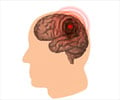Patients show modest yet meaningful gains in limb movement and an improved outlook on life years after suffering a stroke, a major clinical study
Patients show modest yet meaningful gains in limb movement and an improved outlook on life years after suffering a stroke, a major clinical study has found. The paper, published online this week in the New England Journal of Medicine, provides the best evidence yet that stroke sufferers in a controlled study can regain limb movement long after an injury, through intensive therapy with specially trained personnel and newly created robotic aids.
"There are about 6.4 million stroke patients in the U.S. with chronic deficits. We've shown that with the right therapy, they can see improvements in movement, everyday function, and quality of life," said Albert Lo, assistant professor of neurology at Brown University and the study's lead author. "This is giving stroke survivors new hope."The three-year randomized control trial by the U.S. Department of Veterans Affairs enrolled 127 veterans at four VA sites. All had suffered a stroke at least six months earlier and had moderate to severe impairment of an arm. On average, the strokes had occurred nearly five years before; one-third of the victims had suffered multiple strokes. Patients typically get rehabilitation therapy only during the first six months or so after a stroke. Conventional thinking has been that long-term stroke survivors cannot accrue additional meaningful benefits after that time. Recent studies, though, have begun to suggest otherwise.
The therapy involved repetitive, guided movement, three times a week, for three months. One group of patients underwent upper-limb therapy with the use of robots designed at the Massachusetts Institute of Technology. Others did similar high-intensity exercises with a therapist. At each session, the patients performed 1,024 upper-arm movements, a substantially more intense workout than in a conventional rehabilitation session. A third, smaller group had only "usual care" — they received general health care but no specific therapy for their stroke-damaged upper limb.
Patients who had 12 weeks of robot-assisted therapy showed statistically significant improved quality of life (an 8-point improvement on the Stroke Impact Scale) compared to those who had no additional therapy. At six months, patients aided by the robotic therapy showed clinically significant upper-arm function (3-point improvement on the Fugl-Meyer Scale) compared to the usual care group.
To measure the impact on everyday life, researchers asked patients a battery of questions: how well they could cut food with a fork and knife, open jars, or tie their shoes. Patients were also asked about activities not directly related to their arms, such as walking or climbing stairs. Most patients in the therapy groups reported across-the-board progress, compared with no progress in the control group. (The control group was enrolled in intensive therapy after the study ended.)
The team theorizes that boosting arm function helped patients be more active overall, which led to wider health improvements. "We believe that by gaining more function and better control of their affected arms, patients were able to get out and do more, translating their motor benefits into additional meaningful social activity and participation," said Lo, also a neurologist at the Providence VA Medical Center.
Advertisement
"The robots provide 'power steering' for the arms — just enough assistance to allow people to move," said George Wittenberg, a neurologist at the VA and the study's lead investigator in Baltimore.
Advertisement
"One of the purposes of this study was to upend the conventional dogma that stroke victims can't recover physiological function," Lo said.
Source-Eurekalert
SRM













